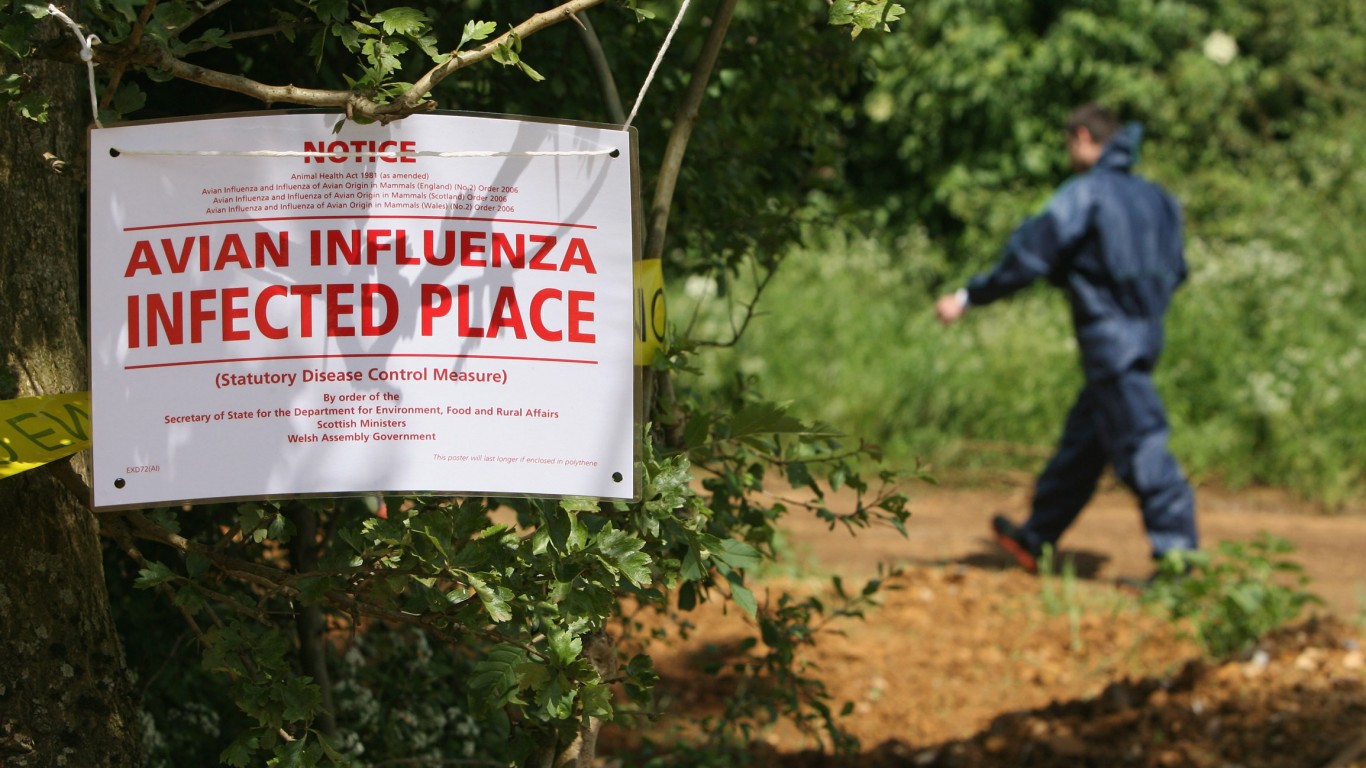
Humans have been fighting disease since long before our genus evolved into Homo sapiens. The most recent example is COVID-19. Though the latest variant of the virus that causes the disease is very contagious, its fatality rate is relatively low in comparison with pathogens. (Here’s how COVID fatalities compare with those of other diseases.)
Antibiotics, vaccines, and antiviral drugs have been effective in preventing infections from spreading widely. Smallpox, for example, has been eradicated. However, as humans and our immune systems evolve, so do deadly pathogens. Some, such as Ebola, have jumped from animals to humans in recent decades, causing large outbreaks.
To determine the deadliest pathogens on Earth, 24/7 Tempo ranked viruses, bacteria, amoebas, and other potentially lethal pathogens according to their fatality rates in humans using information from Live Science and CBS News. Diseases with causes that are yet to be determined were not considered.
Click here to see the deadliest pathogens on earth
The mortality rate for any disease varies depending on access to vaccines and medical help. Some of these pathogens on the list – such as MERS or tuberculosis – spread from person to person. Others come from infected substances – even water – or from animals or microscopic organisms. (These are the 20 worst epidemics and pandemics in history.)

22. Tuberculosis
> Mortality rate: 15.0%
> Type of pathogen: Bacteria
[in-text-ad]
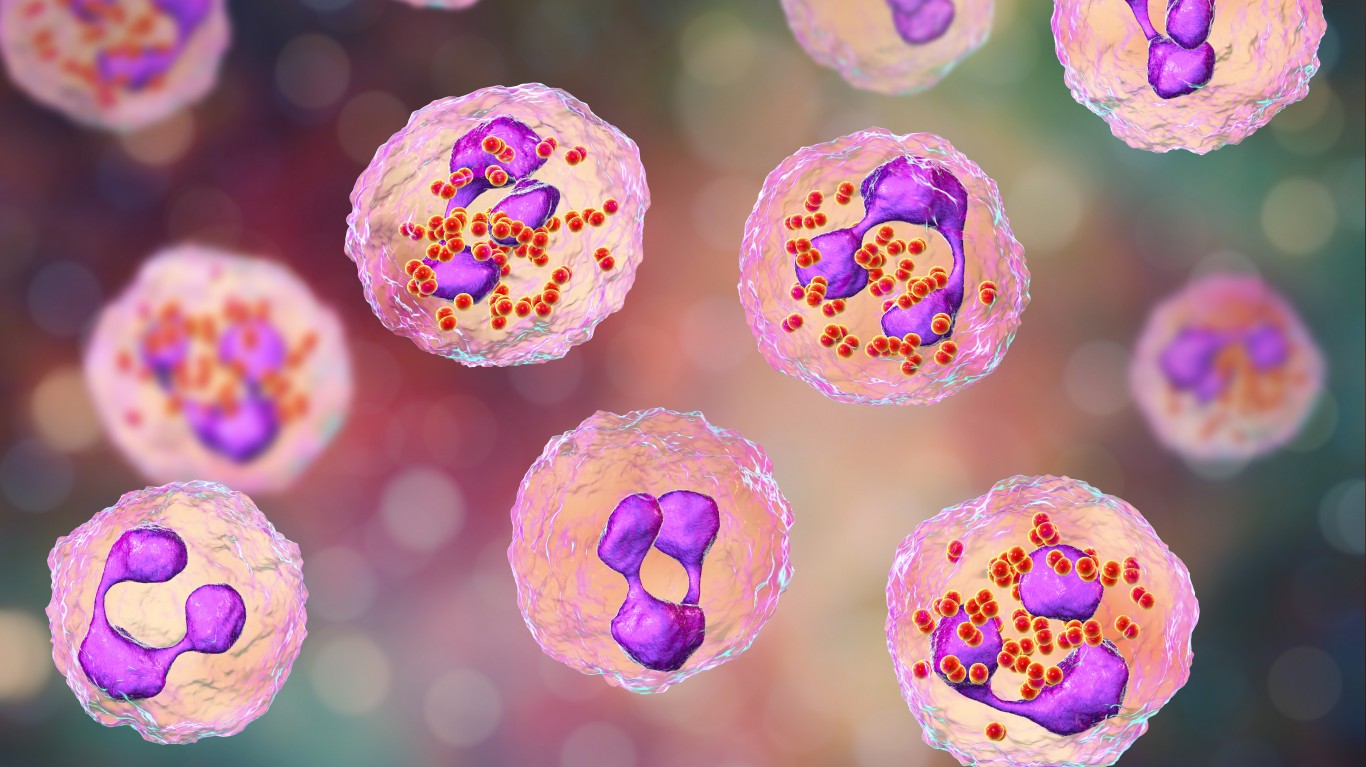
22. Meningococcal meningitis
> Mortality rate: 15.0%
> Type of pathogen: Bacteria
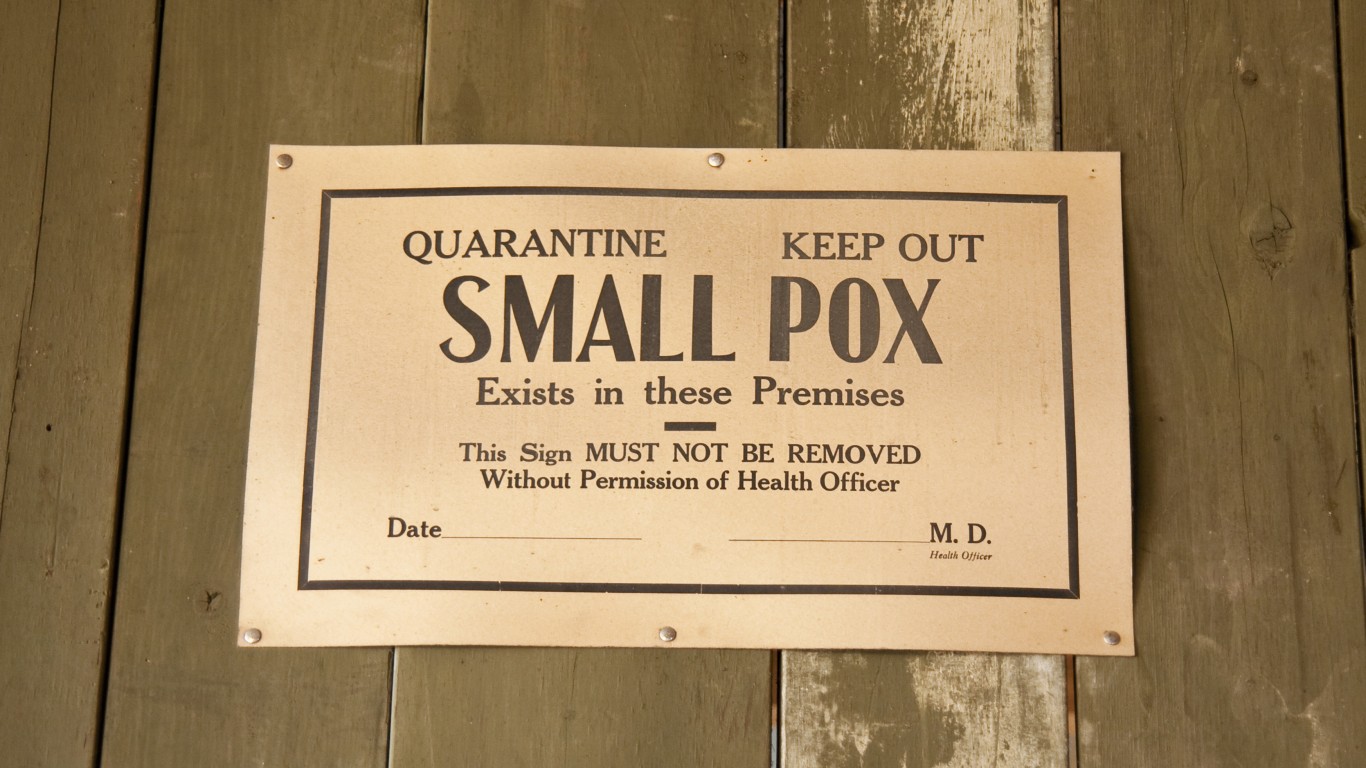
17. Smallpox
> Mortality rate: 30.0%
> Type of pathogen: Virus
17. Crimean-Congo hemorrhagic fever
> Mortality rate: 30.0%
> Type of pathogen: Virus
[in-text-ad-2]

17. Eastern equine encephalitis
> Mortality rate: 30.0%
> Type of pathogen: Virus

17. Invasive listeria
> Mortality rate: 30.0%
> Type of pathogen: Bacteria
[in-text-ad]

17. Staphylococcus aureus
> Mortality rate: 30.0%
> Type of pathogen: Bacteria
16. Invasive aspergillosis
> Mortality rate: 30.2%
> Type of pathogen: Fungus

15. Vibrio illness
> Mortality rate: 34.2%
> Type of pathogen: Bacteria
[in-text-ad-2]

14. MERS (Middle East Respiratory Syndrome)
> Mortality rate: 34.4%
> Type of pathogen: Virus
13. Hantavirus
> Mortality rate: 36.0%
> Type of pathogen: Virus
[in-text-ad]
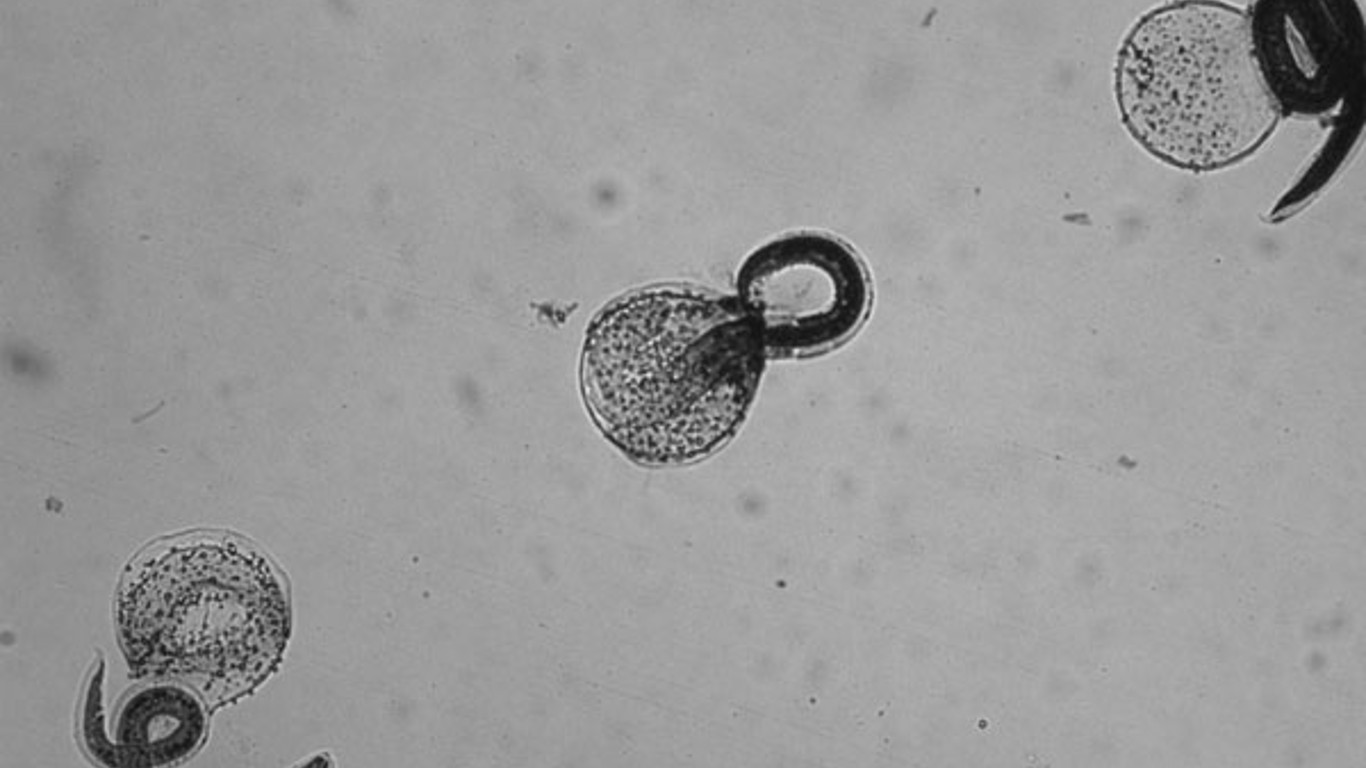
12. Baylisascariasis
> Mortality rate: 38.5%
> Type of pathogen: Parasite

11. Glanders
> Mortality rate: 40.0%
> Type of pathogen: Bacteria
10. Monkey B Virus
> Mortality rate: 42.0%
> Type of pathogen: Virus
[in-text-ad-2]
9. African trypanosomiasis
> Mortality rate: 42.5%
> Type of pathogen: Parasite
7. Marburg virus
> Mortality rate: 50.0%
> Type of pathogen: Virus
[in-text-ad]
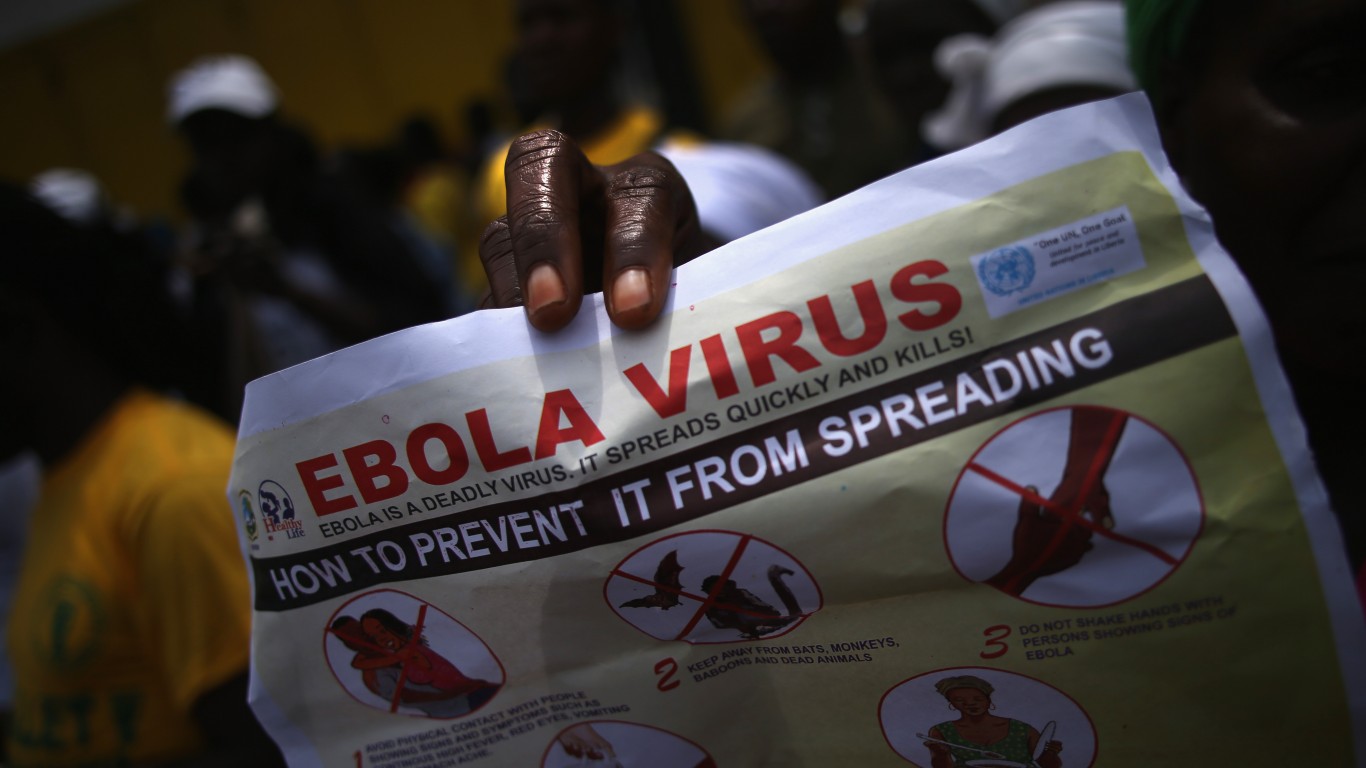
7. Ebola virus
> Mortality rate: 50.0%
> Type of pathogen: Virus
6. Hendra virus
> Mortality rate: 57.0%
> Type of pathogen: Virus

5. Bird flu
> Mortality rate: 60.0%
> Type of pathogen: Virus
[in-text-ad-2]
4. Nipah virus
> Mortality rate: 75.0%
> Type of pathogen: Virus
3. Naegleria fowleri (brain-eating amoeba)
> Mortality rate: 95.0%
> Type of pathogen: Amoeba
[in-text-ad]
2. Balamuthia encephalitis
> Mortality rate: 98.0%
> Type of pathogen: Amoeba

1. Rabies
> Mortality rate: 99.9%
> Type of pathogen: Virus
Is Your Money Earning the Best Possible Rate? (Sponsor)
Let’s face it: If your money is just sitting in a checking account, you’re losing value every single day. With most checking accounts offering little to no interest, the cash you worked so hard to save is gradually being eroded by inflation.
However, by moving that money into a high-yield savings account, you can put your cash to work, growing steadily with little to no effort on your part. In just a few clicks, you can set up a high-yield savings account and start earning interest immediately.
There are plenty of reputable banks and online platforms that offer competitive rates, and many of them come with zero fees and no minimum balance requirements. Click here to see if you’re earning the best possible rate on your money!
Thank you for reading! Have some feedback for us?
Contact the 24/7 Wall St. editorial team.
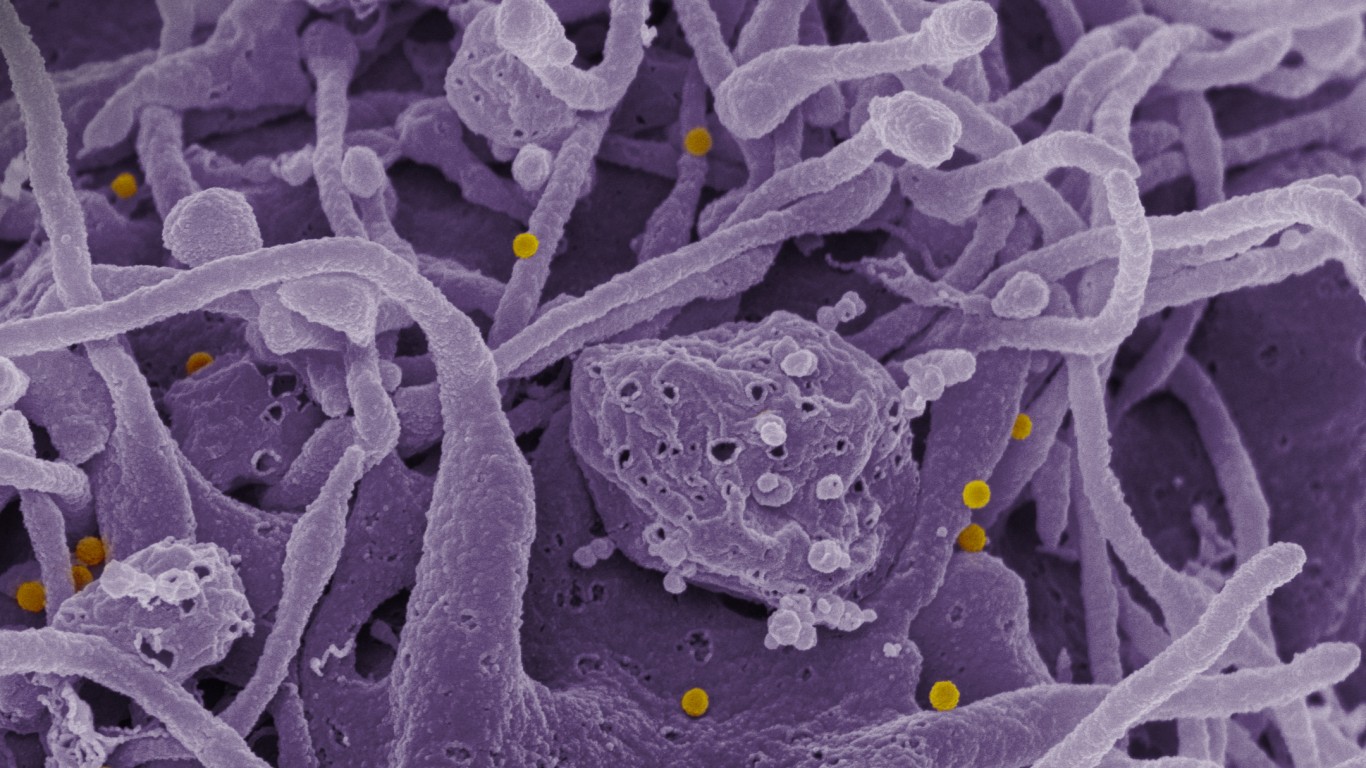
 24/7 Wall St.
24/7 Wall St.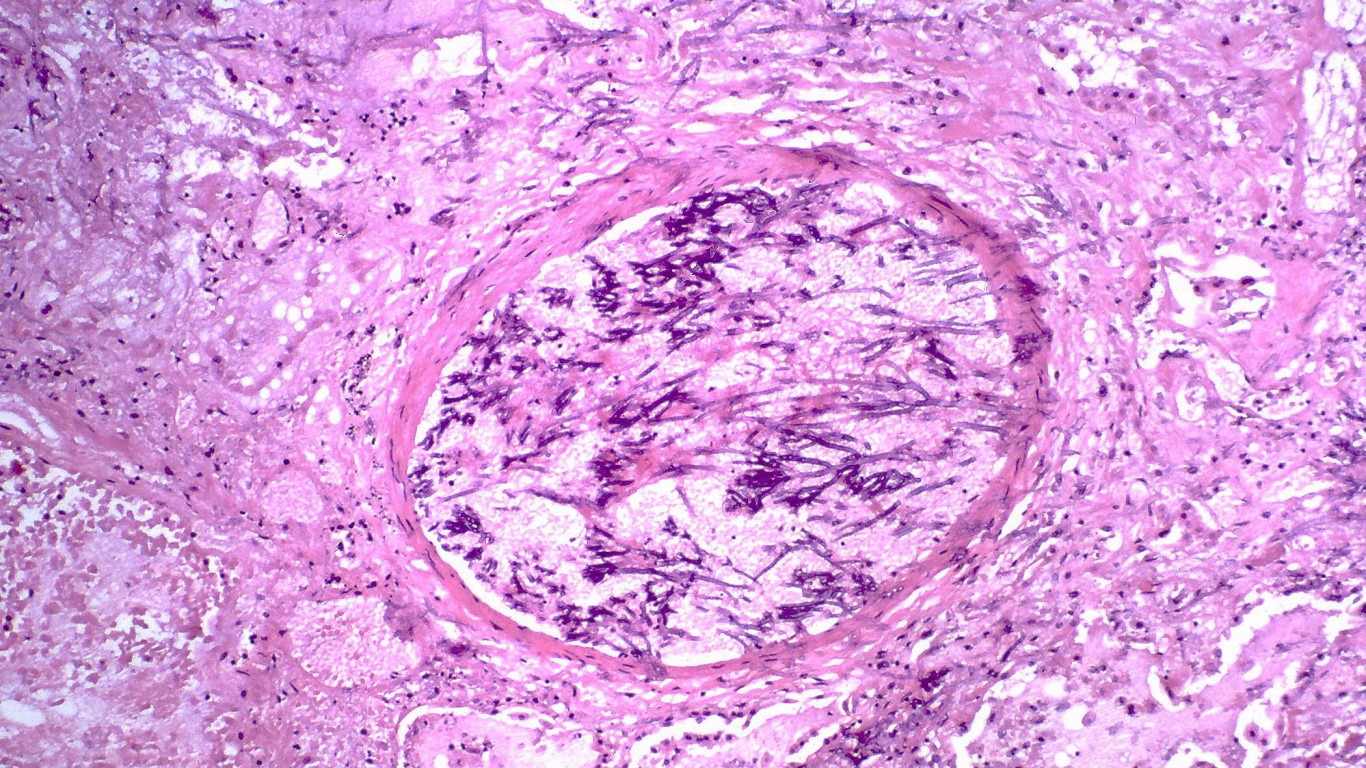

 24/7 Wall St.
24/7 Wall St.
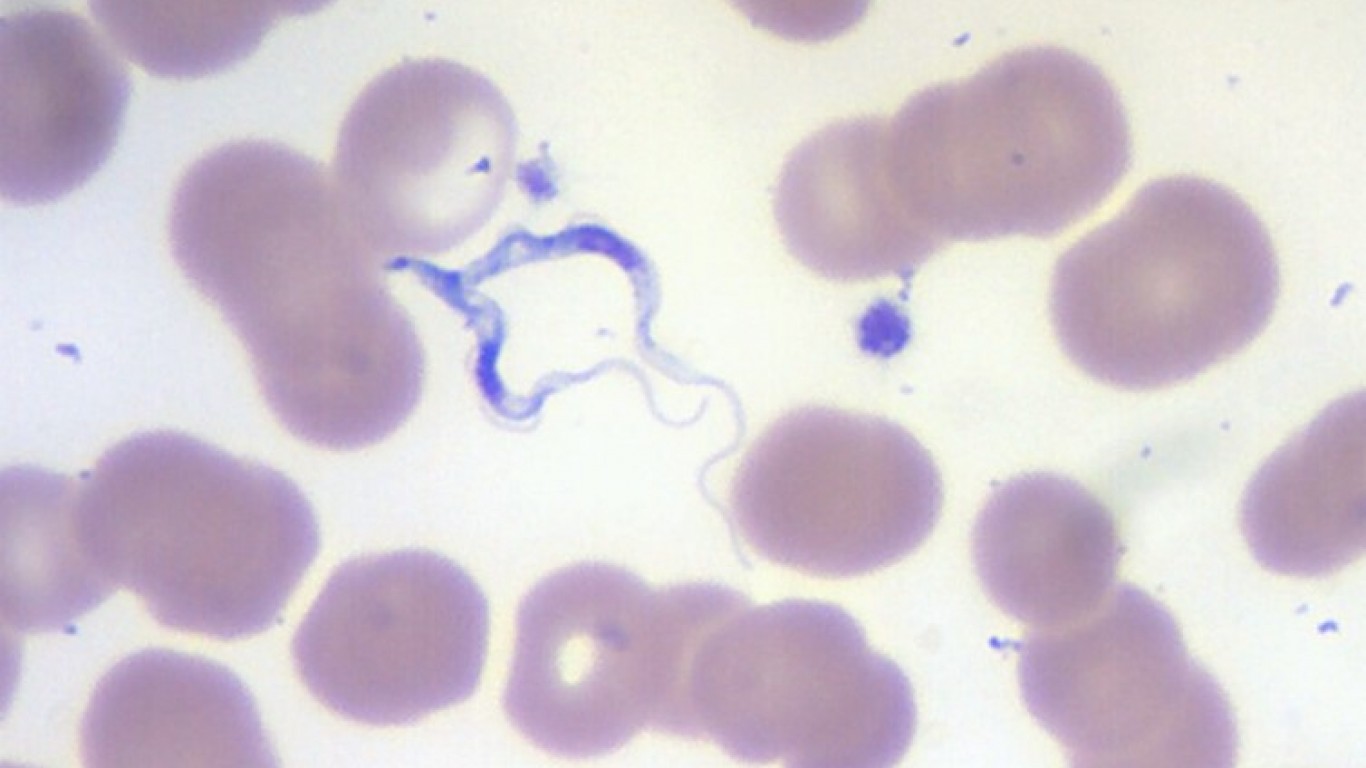
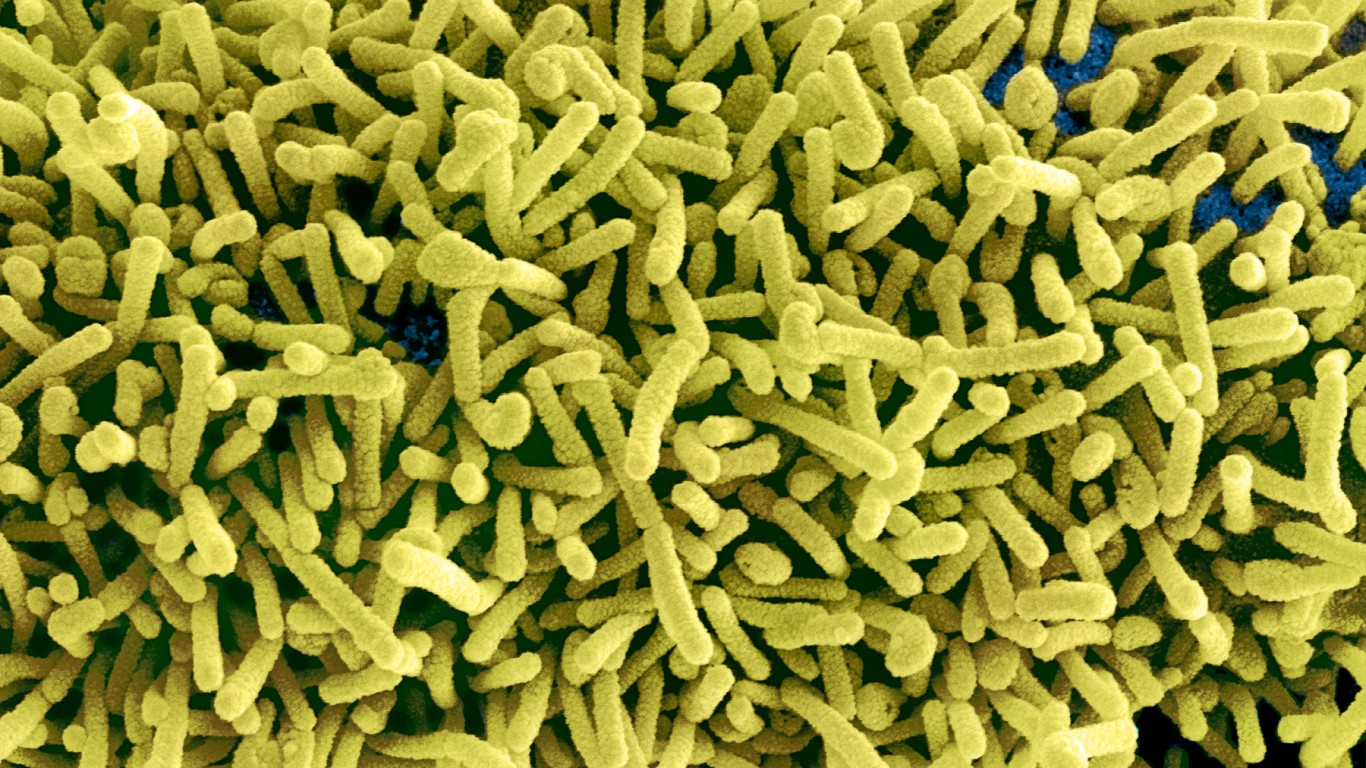
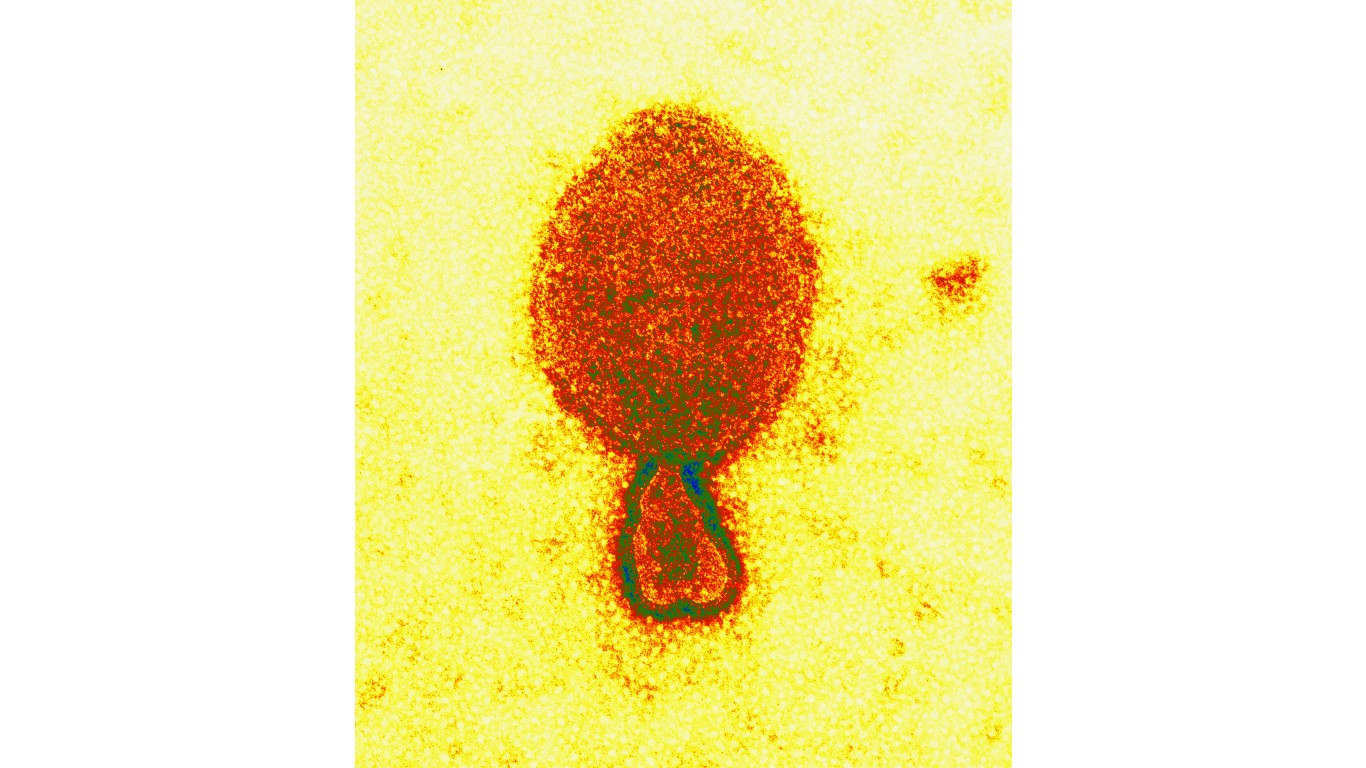


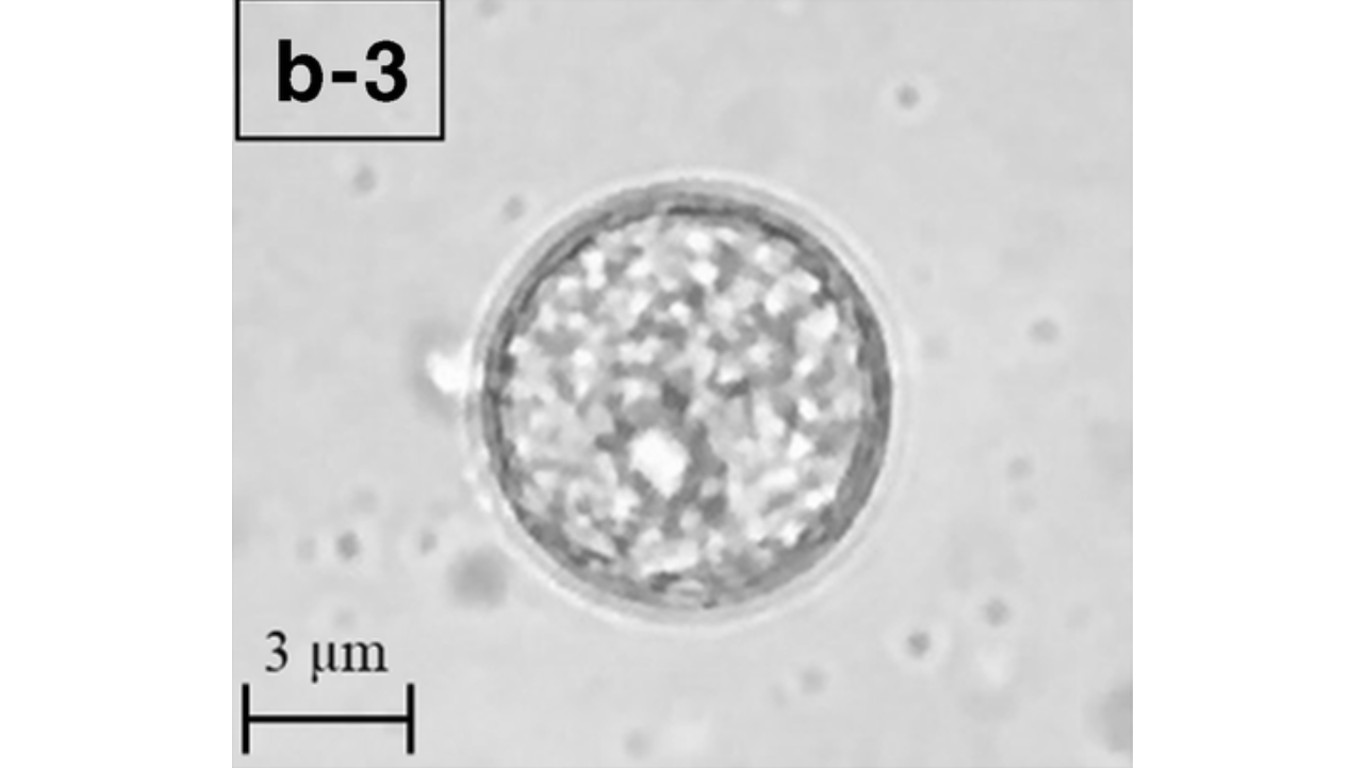
 24/7 Wall St.
24/7 Wall St.

